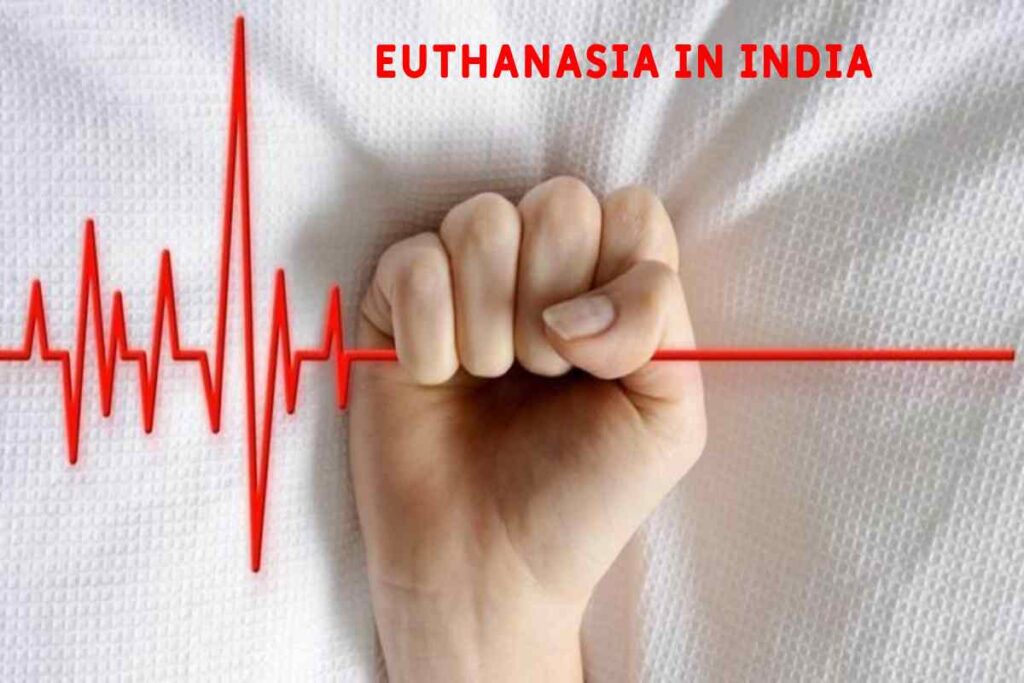Euthanasia Legalization
Euthanasia in India experience This article acquaints the reader with the Indian journey of legalizing euthanasia and the key ethical issues arising, considering that it is an active debate. It also called “mercy killing,” continues to be the subject of passionate discussion in Indian society as it raises questions about the rights and morality of life and death and patients’ rights. For more updates please visit our website legalants
The Aruna Shanbaug Case: A Watershed
The case that made the issue of euthanasia an essential concern in Indian law and society was the case of Aruna Ramchandra Shanbaug. The case for Kaushalya Shanbaug, who worked at King Edward Memorial Hospital in Mumbai. A man raped her in 1973, and she remained in a persistent vegetative condition. She stayed in this state for 42 years, and her case forms a center for legal cases in India for euthanasia.
A petition was filed in the Supreme Court of India in 2011, and in the same year, the Supreme Court ordered the release of Shanbaug. In the same verdict, the apex court dismissed the mortal mercy plea of Aruna Ramchandra Shanbaug but drew standards for passive euthanasia in the country. This decision was an important one because, for the first time, the country’s highest court held that passive euthanasia is legal if performed under strict conditions.
A Review on Awareness of Euthanasia in Indian Perspective
The discussion on euthanasia in India cannot be separated from the cultural, religious, and ethical perspectives. Religions such as Islam, Hinduism, Christianity, and Sikhism, amongst others, are practiced in the country. Thus giving a diverse view of the sanctity of life and the right to die.
Active vs. Passive Euthanasia
India legalizes active and passive euthanasia, where active means helping the patient actively die while passive means letting the patient die naturally. That is why passive euthanasia, as well as active, which is also known as the intentional termination of a person’s life through specific actions, is prohibited in India. There is another, which is the passive type of euthanasia, which entails the removal of any mechanisms that may be used to prolong the life of the patient by providing health-enhancing treatment and also allowing the process of natural dying to take its course.
It is imperative to note that the landmark judgment of the Supreme Court of India in 2011 deals with passive euthanasia for terminal and P. V. S patients. Some of these guidelines included passive euthanasia, which can only be carried out as per approval by a medical board and the High Court.
Legal Regime and More Recent Evolution
It is not the end of the legal battle on euthanasia in India, as the legal position on the issue has changed since the above judgment. In 2018, the Supreme Court gave another landmark judgment by stating that the right to die with dignity cannot be termed as valid freedom under Article 21 of the Constitution of India. Which relates to the right to life and personal liberty.
The Living Will: It lends a small step towards autonomy: The idea of any Ministry. Especially one of such a significant state as Maharashtra, getting a say in its Governance is an idea principle, in a way, that lends a small step towards autonomy.
The “living will,” which was upheld for the first time in the judgment in 2018, is another essential component of the reform. The living will also enable a person to elect their care in their terminal phase, including refusal to extend the natural life span.
To counter abuse of this measure, the court laid down strict procedural rules on how the living wills had to be developed and implemented. These are multiple witness requirements, Judicial Magistrate authentication, and multiple layers of process implementation at hospital and district medical board levels.
Challenges and Controversies Euthanasia in India

However, there are particular challenges that the implementation of euthanasia in India is facing even after its legalization. However, the elaborate conditions of procedure intended to check negligence have been described as complicating the process and perhaps out of reach of many.
The medical perspective of these ethical dilemma solvers is in the following section.
The healthcare professionals in India, physicians, nurses, hospital administrators, ethicists & lawmakers have expressed opinions that are not very unified on the topic of euthanasia. Instead, there are those in support of it as a way of allowing a patient to die with dignity, especially those who are in PVS or terminally ill. While there are those who are also against it due to the concerns over the possibility of abusing the process as well as the ethical question the practicing physicians and other health care professionals.
The Indian Medical Association has said patient privacy should be better defined, and more rules and regulations should be placed for the safety of both the patient and the doctor. Some people have expressed worry about the force because, in a country where health care costs are high for families, force is being used. The report emphasizes the importance of humanitarian interventions to provide relief aid, shelter, and healthcare to mitigate the suffering of affected communities In BBC Zamfara.
Societal and Religious Perspectives Euthanasia in India
The religious and cultural diversity of India poses an additional challenge while discussing the legalization of euthanasia. The act has received a lot of criticism from several religious officials since they considered it immoral due to the doctrines of the sanctity of life. But there are also opinions with the help of members of different religions and aborigines expressing the hope for compassion and the right of people to undergo a decent death.
There are social taboos surrounding death and decisions related to it, thus making it hard for people to reason about euthanasia. In India, a large number of families do not have awareness about lifetime care options. Even do not like to talk about it. Which finally results in suffering for a long time, and most people are put on treatments that they do not want to undergo.
The Road Ahead: Authoring Euthanasia Laws in India
As India grapples with the practical implications of its euthanasia laws, several vital areas require attention.
Public Awareness and Education
Thus, there is a high demand for the public crusade aimed at increasing people’s awareness of euthanasia, living will, and various options for end-of-life care. It has been observed that even today, many people in India do not know their rights and the laws that they can enforce. Informed awareness can result in better decisions and possibly reduce the stigma related to these conversations.
Strengthening Healthcare Infrastructure
The enablement of euthanasia laws invites high-end health care that can promote as well as accommodative high resultants of end-of-life solutions. That is why it is essential to work on the extension of access to good quality medical services with an emphasis on rural areas so that euthanasia has to be required rather than needed owing to the lack of other options.
Refining Legal Procedures Euthanasia in India
As stated, it is necessary to simplify the legal procedures to protect patients’ rights. Presently, there are certain legal bases, though. It includes rationalizing the related matters of establishing and incorporating living will and making sure that the three-tier approval process for passive euthanasia does not hamper critical cases.
Responsibility for training for ethical understanding of health care employees
Doctors and nurses are considered on the frontline when providing palliative care mainly due to their closeness to the patients. It remains critical that euthanasia cases should form part of extensive training on ethics and the law such that these healthcare practitioners will be in a position to handle such cases with a lot of dignity and in strict compliance with the provisions of the law.
The history of euthanasia in India is an interesting case study of how the concepts of rights, medicine, law, and culture are changing in India. While the nation struggles to solve these problems, more discussions will occur between lawyers, doctors, ethicists. The public so one can determine the guidelines for granting people’s right to decide without using this right as a tool for harm.
Conclusion
The direction in which euthanasia head in the future in India is obvious. That involves having more stringent laws and better laid down procedures about how and when to go for euthanasia. Moreover, debates and discourses regarding the topic, and a better balancing act between acting out compassion and caution. As Indian society evolves, so will its approach to one of humanity’s most profound questions. We are given the right to decide how our life will end.

